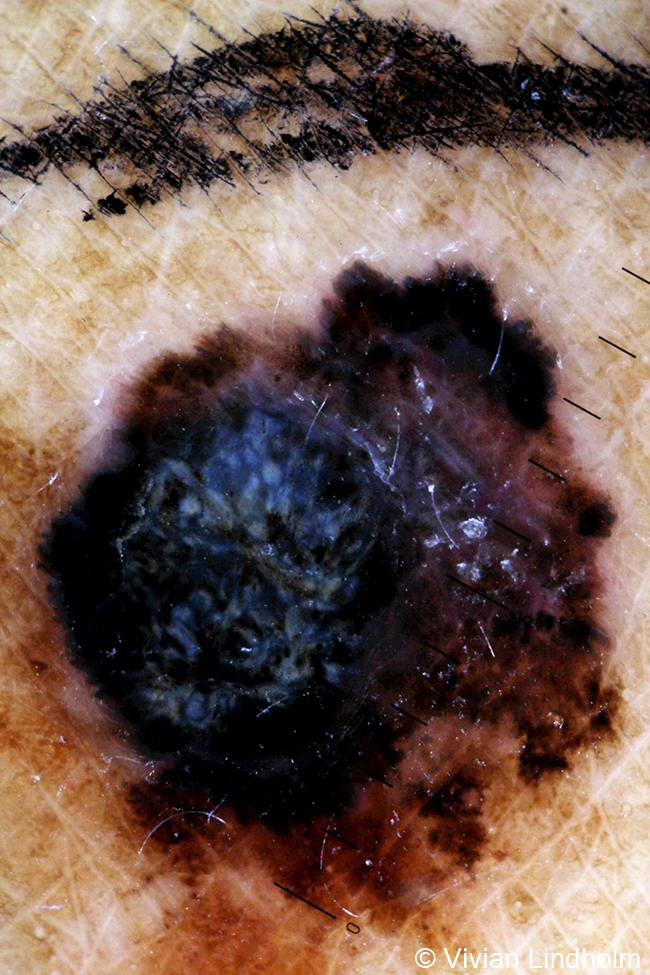Melanoma

Melanoma. Dermatoscopic image. (Breslow 1.3 mm, Clark IV), note the blue-white veil in the centre; in addition, the pigment network is asymmetric and partly indiscernible (structureless black areas). At the lesion margins (particularly in the upper parts), there is asymmetrically distributed radial streaming.
Image: Vivian Lindholm. Legend: Vivian Lindholm, Alexander Salava
Primary/Secondary Keywords
- melanoma
- dermatoscopy
- naevus
- pigment network
- skin
- dermatology